Abstract
The minimal inhibitory concentrations and minimal bactericidal concentrations of seven antibiotics were determined by broth dilution tests for 50 clinical isolates of Bacteroides fragilis. Chloramphenicol, erythromycin, lincomycin, clindamycin, and rifampin inhibited 80 to 100% of the strains at concentrations attainable in the serum. Penicillin and tetracycline were less effective, inhibiting 4 and 40% of the strains, respectively, at concentrations attainable in the serum. The strains exhibited a bimodal distribution with tetracycline but a very narrow pattern of susceptibility with chloramphenicol. Bactericidal concentrations were 4- to 128- fold higher than minimal inhibitory concentrations for all antibiotics; only clindamycin showed bactericidal activity at levels attainable in serum. Clindamycin was significantly more effective than lincomycin as determined by tests of inhibitory and bactericidal activity. The distinct patterns of susceptibility of B. fragilis may be used for the preliminary selection of antimicrobial therapy.
Full text
PDF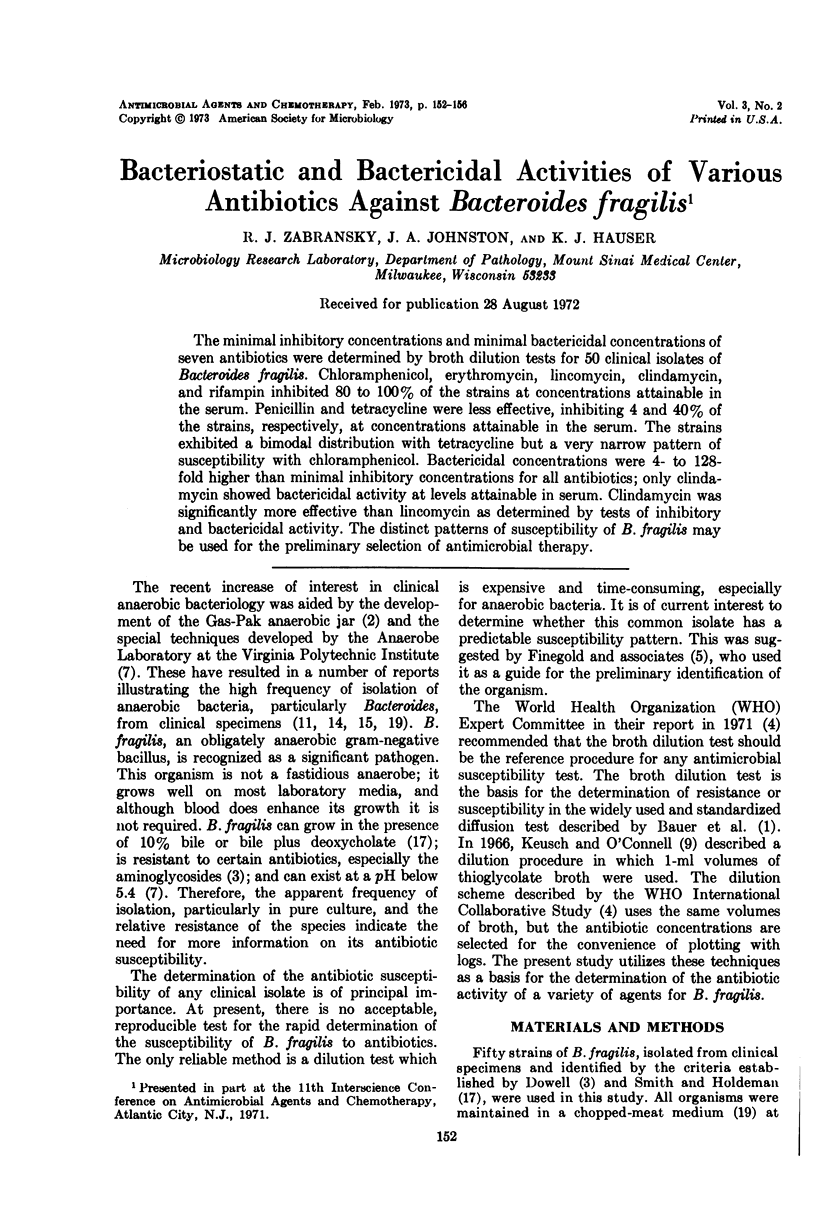
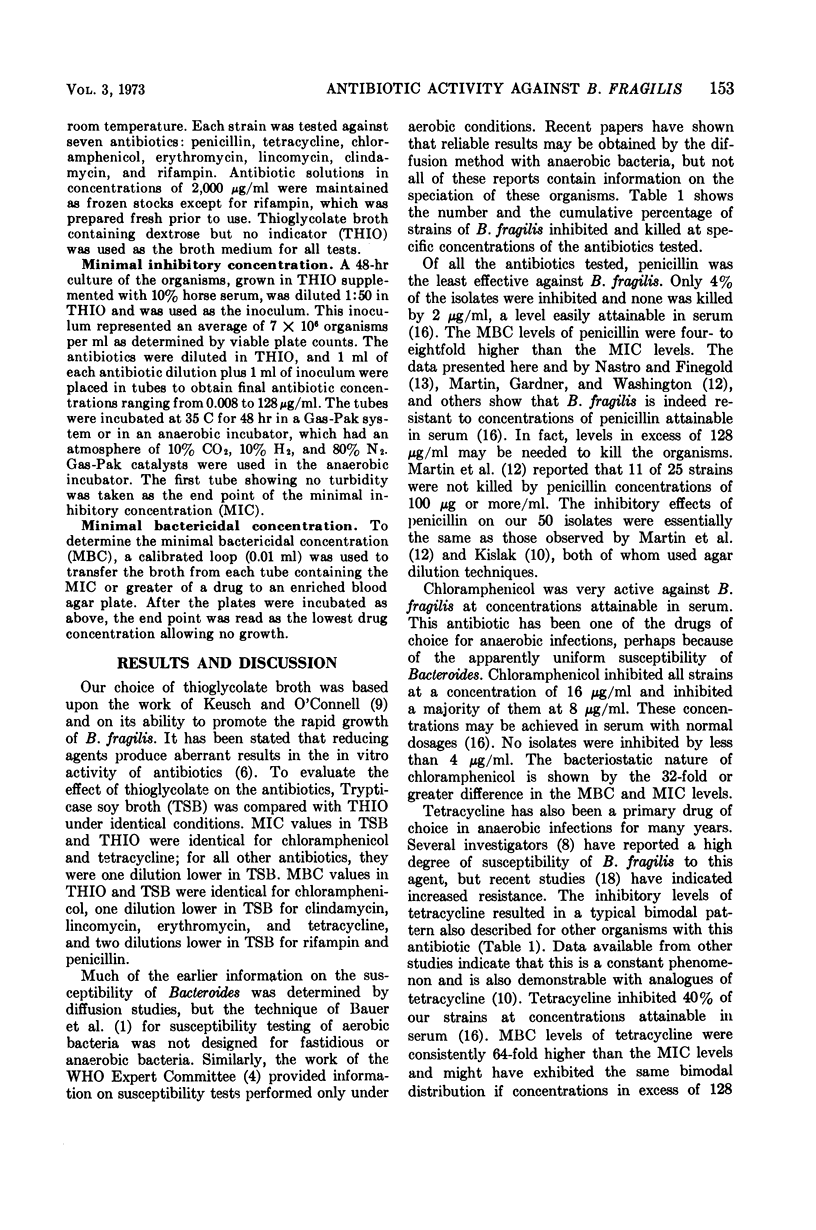
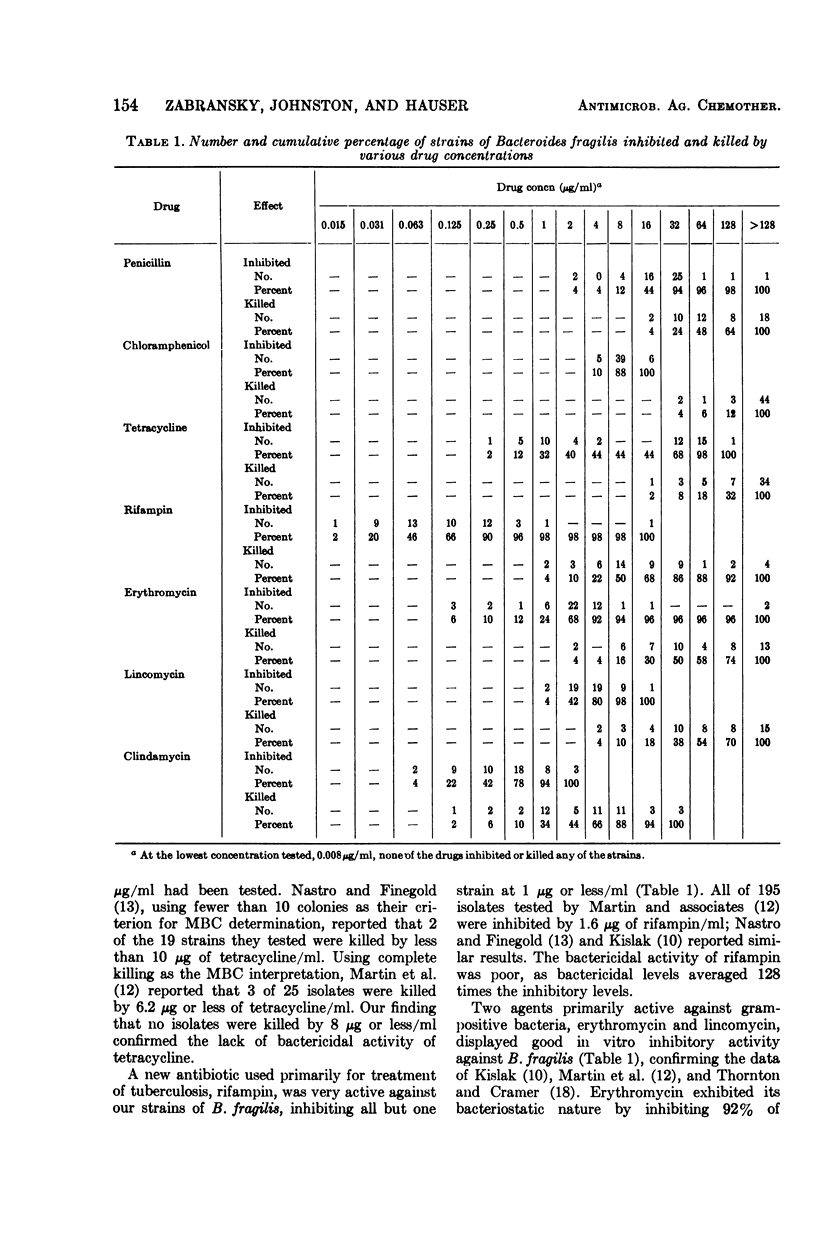
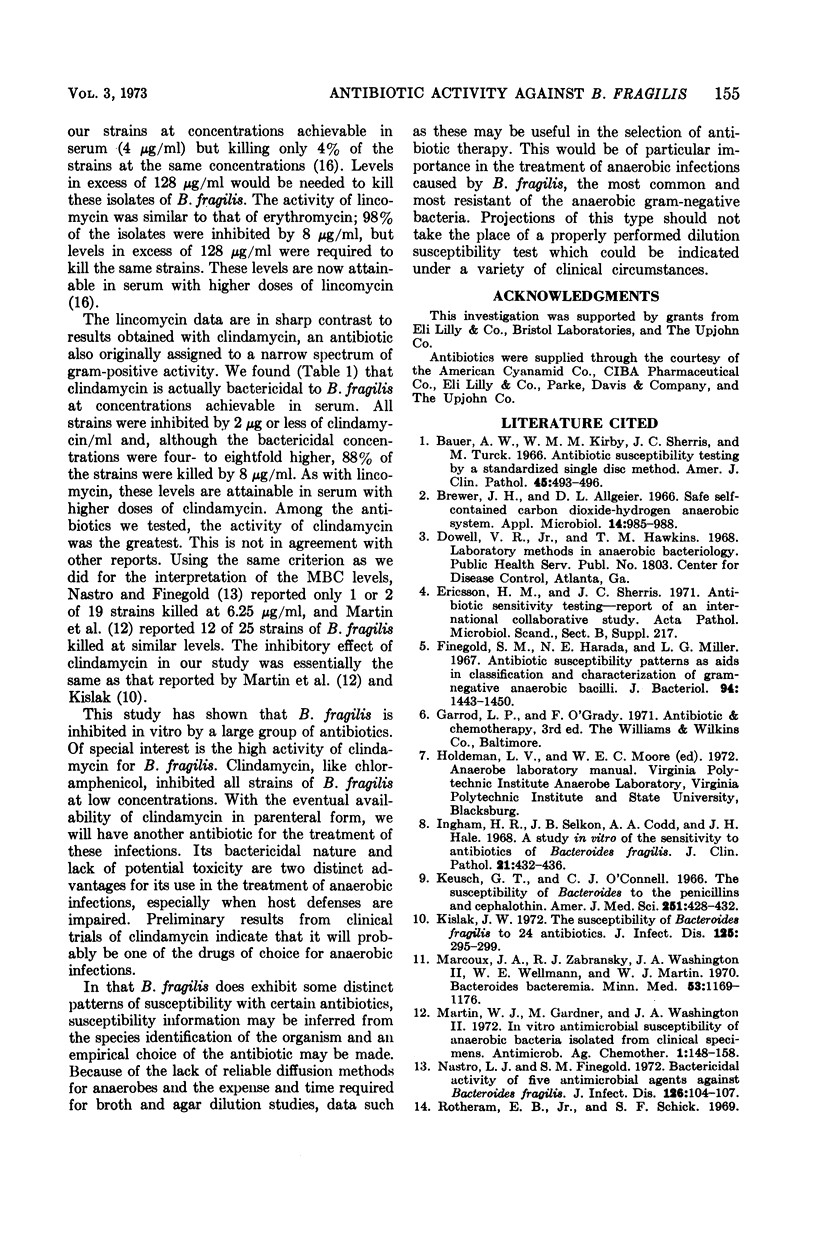
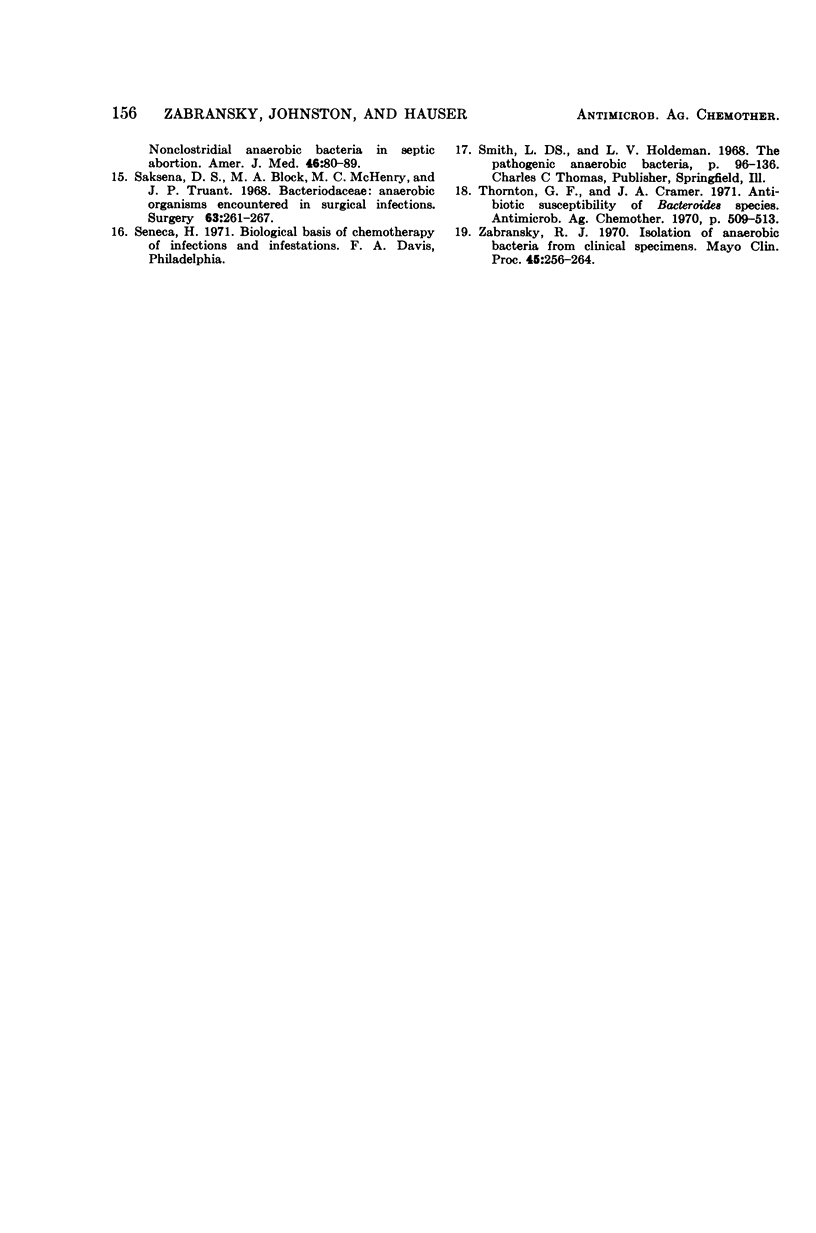
Selected References
These references are in PubMed. This may not be the complete list of references from this article.
- Bauer A. W., Kirby W. M., Sherris J. C., Turck M. Antibiotic susceptibility testing by a standardized single disk method. Am J Clin Pathol. 1966 Apr;45(4):493–496. [PubMed] [Google Scholar]
- Brewer J. H., Allgeier D. L. Safe Self-contained Carbon Dioxide-Hydrogen Anaerobic System. Appl Microbiol. 1966 Nov;14(6):985–988. doi: 10.1128/am.14.6.985-988.1966. [DOI] [PMC free article] [PubMed] [Google Scholar]
- Ericsson H. M., Sherris J. C. Antibiotic sensitivity testing. Report of an international collaborative study. Acta Pathol Microbiol Scand B Microbiol Immunol. 1971;217(Suppl):1+–1+. [PubMed] [Google Scholar]
- Finegold S. M., Harada N. E., Miller L. G. Antibiotic susceptibility patterns as aids in classification and characterization of gram-negative anaerobic bacilli. J Bacteriol. 1967 Nov;94(5):1443–1450. doi: 10.1128/jb.94.5.1443-1450.1967. [DOI] [PMC free article] [PubMed] [Google Scholar]
- Ingham H. R., Selkon J. B., Codd A. A., Hale J. H. A study in vitro of the sensitivity to antibiotics of Bacteroides fragilis. J Clin Pathol. 1968 Jul;21(4):432–436. doi: 10.1136/jcp.21.4.432. [DOI] [PMC free article] [PubMed] [Google Scholar]
- Keusch G. T., O'Connell C. J. The susceptibility of bacteroides to the penicillins and cephalothin. Am J Med Sci. 1966 Apr;251(4):428–432. doi: 10.1097/00000441-196604000-00007. [DOI] [PubMed] [Google Scholar]
- Kislak J. W. The susceptibility of Bacteroides fragilis to 24 antibiotics. J Infect Dis. 1972 Mar;125(3):295–299. doi: 10.1093/infdis/125.3.295. [DOI] [PubMed] [Google Scholar]
- Marcoux J. A., Zabransky R. J., Washington J. A., 2nd, Wellman W. E., Martin W. J. Bacteroides bacteremia. Minn Med. 1970 Nov;53(11):1169–1176. [PubMed] [Google Scholar]
- Martin W. J., Gardner M., Washington J. A., 2nd In vitro antimicrobial susceptibility of anaerobic bacteria isolated from clinical specimens. Antimicrob Agents Chemother. 1972 Feb;1(2):148–158. doi: 10.1128/aac.1.2.148. [DOI] [PMC free article] [PubMed] [Google Scholar]
- Nastro L. J., Finegold S. M. Bactericidal activity of five antimicrobial agents against Bacteroides fragilis. J Infect Dis. 1972 Jul;126(1):104–107. doi: 10.1093/infdis/126.1.104. [DOI] [PubMed] [Google Scholar]
- Thornton G. F., Cramer J. A. Antibiotic susceptibility of bacteroides species. Antimicrob Agents Chemother (Bethesda) 1970;10:509–513. [PubMed] [Google Scholar]
- Zabransky R. J. Isolation of anaerobic bacteria from clinical specimens. Mayo Clin Proc. 1970 Apr;45(4):256–264. [PubMed] [Google Scholar]


